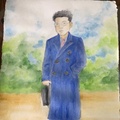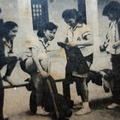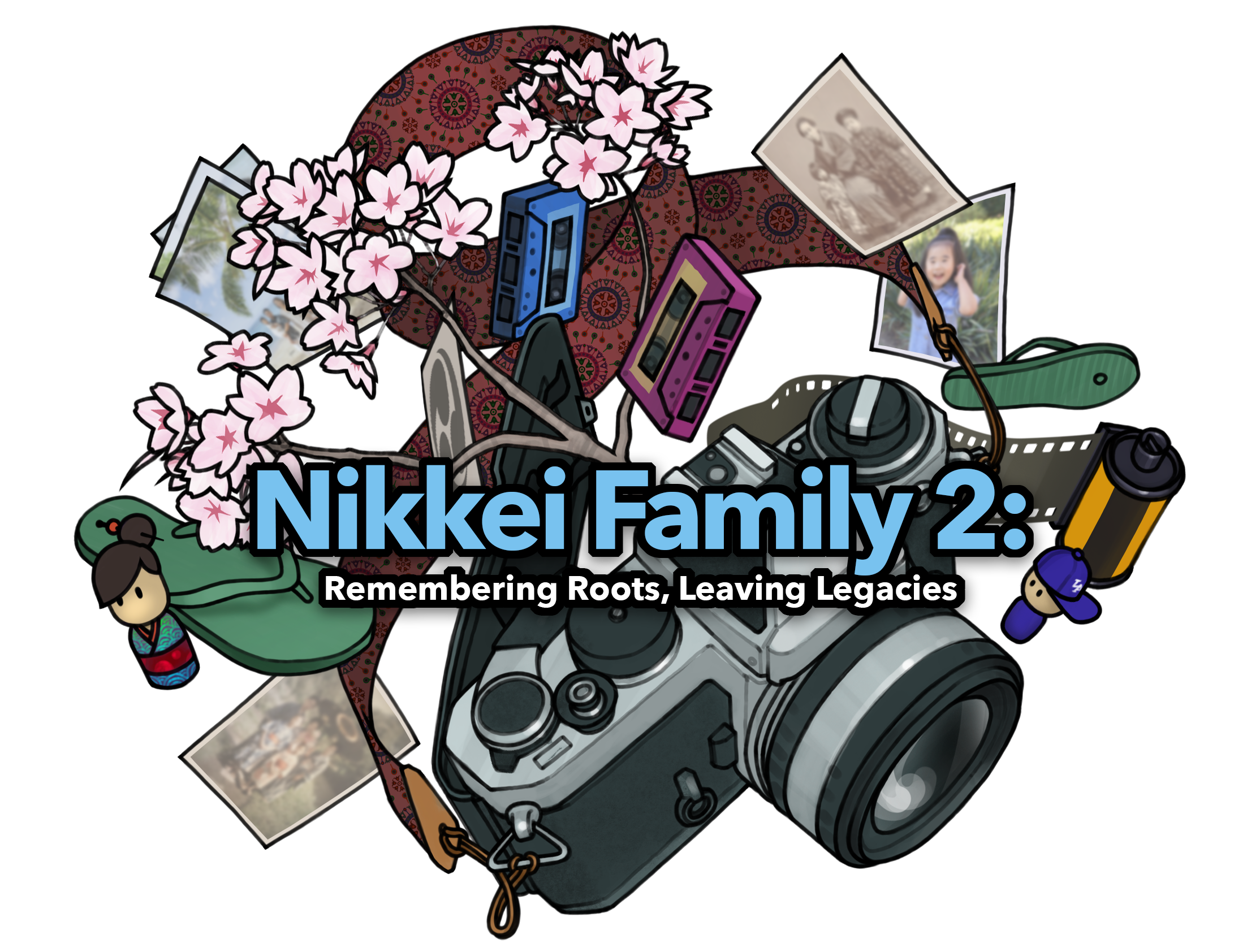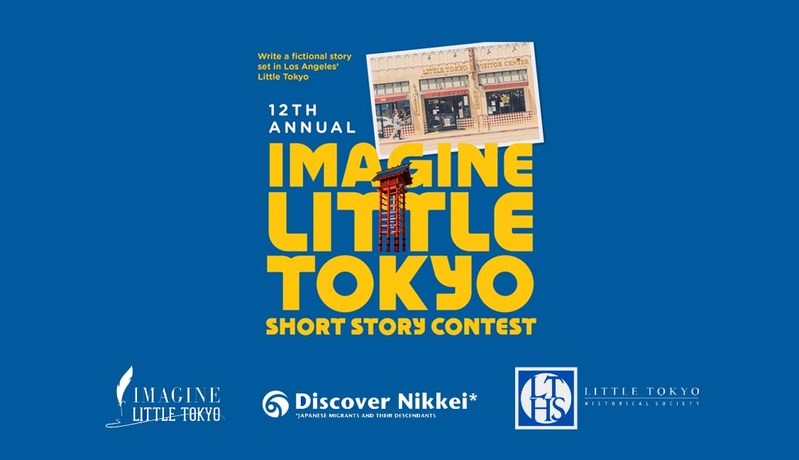All Peruvians felt that Peru was finally emerging from long years of extreme poverty, terrorism, hyperinflation, and unemployment. With the political and socioeconomic measures of then-President Fujimori, Peru was opening up to international economic investment and social calm. That's why, on December 17, 1996, no one expected what happened at the residence of the Japanese Ambassador to Peru.
An important historical milestone was reached in Peru. Terrorism was coming to an end as a central theme in the history of our country, and we Nikkei were there to experience and witness it.
I wanted to capture the moment in history when men who chose different paths, probably pursuing the same goal, met and clashed. Some took the path of violence and terrorism, while others took the path of hard, disciplined, honest, and responsible work.
The Japanese immigrants and their children, the Nikkei, had reached that historic moment with perseverance and faith in their destiny in the land, which was now also their land, their country.
By recounting the events of the hostage-taking at the Japanese ambassador's residence and my father's exemplary memories as an immigrant to Peru, I wanted to draw a parallel between the struggle of the people to achieve a better place, which even now appears much stronger and more powerful with the large migrations and the measures implemented.
The path of political ambition, forgetting human solidarity, confronts and erases the importance of entering history with our heads held high.
* * * * *
It was the morning after the terrorists took over the Japanese residence. Despite being December and the beginning of summer in Lima, the day was gray and cold; at dawn, a light drizzle had fallen, and the ground was wet and slippery in places. Taking care to avoid the small puddles that had formed on the asphalt, I crossed the road to take a taxi to the hospital.
At the corner of the Red Cross headquarters, I waited for a long time. Although it was already close to 7:30 in the morning, there wasn't a single car or person nearby. I was completely alone. Everything was so quiet that I could even clearly hear footsteps approaching in the distance. Since that was the only sound I could make at that moment, I turned my head to see who was approaching. The footsteps, which until then had been measured and slow, began to sound louder and more hurried. Out of the corner of my eye, I saw an elderly man approaching, with gray hair and a sparse mustache. He was dark-skinned, thin, and somewhat stooped. He was wearing a brown suit and white shirt without a tie, and well-polished black shoes. He carried a folded newspaper under his right arm, which he held in his other hand. I don't usually pay much attention to people on the street, but something in his demeanor told me that his usual morning walk to buy the newspaper had ceased to be so.
His footsteps, ever closer, tapped the asphalt with force. His hand gripped the newspaper tightly. As he drew closer to me, he gripped the newspaper like a club. His face was tense and distorted, his gaze hard, filled with hatred and rage. Surprised, I instinctively stepped back to get out of his way. A few steps from me, he spat at my feet. He clutched the newspaper in his right hand. Suddenly, we heard a minibus approaching. The man tucked the newspaper under his arm and hurried away.
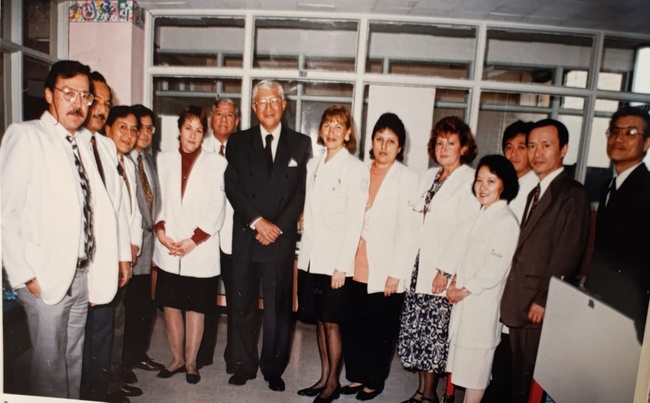
The nights after the day after the residence was taken
Tensions at the ambassador's residence were mounting. The situation for both the terrorists and the hostages was untenable and, over time, would become increasingly unbearable. The terrorists decided to release most of the hostages and keep only the most important ones.
All the women began to leave. They were taken by car and bus first to the various police stations to have their statements taken, then to the Military Hospital to ensure their well-being, and finally to their homes or to the Japanese-Peruvian Cultural Center, where their families waited anxiously. My mother and my aunt were taken to the Lince Police Station, where they were given their "general information" and other information.
To decide who would stay, the terrorists asked the Ambassador for the guest list. Every night, they read out the names of those who could be included in that group. We watched the worried, somewhat distraught faces of the hostages as they boarded the buses on television. Night after night, a group was released. Everyone in Lima watched the images, anxious, hoping to see a husband, a son, a friend, an acquaintance among them. Night after night. Until only 72 hostages remained.
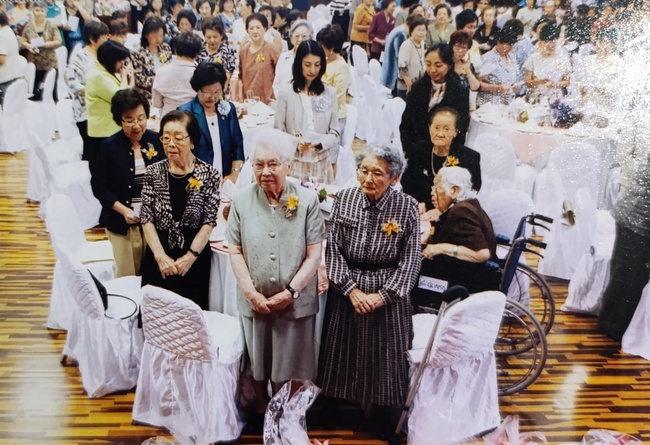
126 days as hostages
Outside the ambassador's residence, all of us in Peru were also, in some way, held hostage during the 126 days of confinement, especially by the uncertainty and misunderstandings that characterized them. We were filled with meaningless images and misinformation, bewildered by the futile dialogue between the deaf and the stubborn, by the frustratingly tedious flow of days, by the inconsequentiality of anecdotal and folkloric information, by the limbo the country remained in day after day.
Inside the residence, for the hostages, staying alive was the priority. Before and outside, work was important, and eating and resting were merely temporary breaks to recharge their batteries and socialize. What had previously been routine, without much significance, took on unusual significance. Breakfast, lunch, and dinner, water, electricity, the bathroom, space, garbage disposal, sleep, leisure... letters...
For the fourteen terrorists, the long stay at the ambassador's residence, after the first few days, must have been more of a relief. After forced marches through the sweltering, hot jungle and the difficult, rugged mountain trails to reach Lima, sleeping wherever they could and eating whatever they could find, they finally seemed to have found a relative haven where they could rest for a while... and at the same time be able to achieve what they wanted. But time showed they didn't know what they wanted. Circumstances surprised them as they did us.
Guerrillas at the outset, all of them had emerged from poverty, motivated by misery, hopelessness, and injustice, and had taken the path of violence. Turned into terrorists, the takeover of the residence must have seemed the only way to express the demands of a sector that saw no other way out of its problems except through violence. However, they compromised on petty matters and lost significance; they missed the brilliant opportunity to tell the world that it must change, that continuing on this path would soon make the situation increasingly unsustainable, as subsequent events have demonstrated.
I remember reading somewhere that the worst form of violence, even more so than terrorism itself, is the perennial, age-old historical rhetoric of rulers and societies that sustain the poverty and injustice suffered by their people. Peru, filled with soaring mountains and deep canyons, vast jungles and endless deserts, the raging Amazon and its nascent rivers and streams, and historic grandeur and misery, occasionally shakes us with the inextinguishable force of its indomitable and rebellious people, who still yearn for great things despite their constant disappointments.
Like Peruvians, Japanese immigrants yearned for great things, and despite constant disappointments, they managed to escape poverty and emerged stronger from the harshness of the situations they had to endure without resorting to violence.
More than four weeks passed without anything of importance happening. The electricity was cut off and water rationed. The Red Cross brought in food. The Monsignor came in and out to look after the spiritual health of the hostages. The garbage, exposed to the heat, waited to be removed. Posters and banners fluttered in the wind, important figures made brief appearances in the windows, journalists from all over the world lost in the insignificance of the broadcast, forgetting the significance of the information. . . .
To be continued.
© 2025 Graciela Nakachi Morimoto


